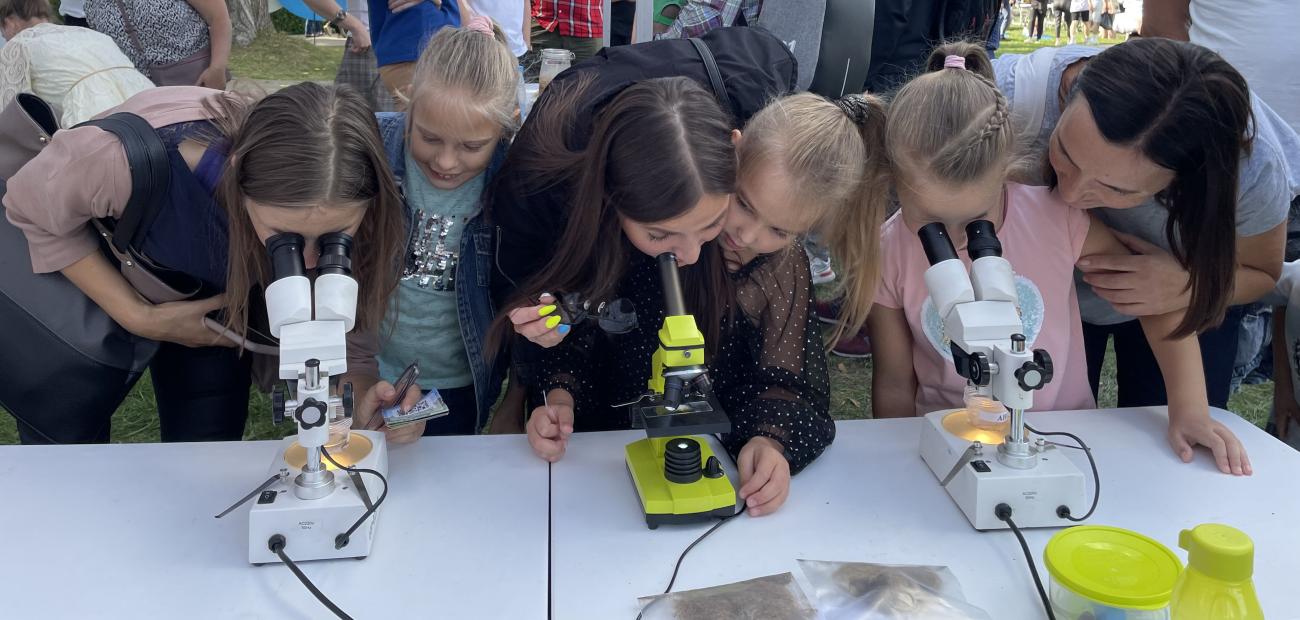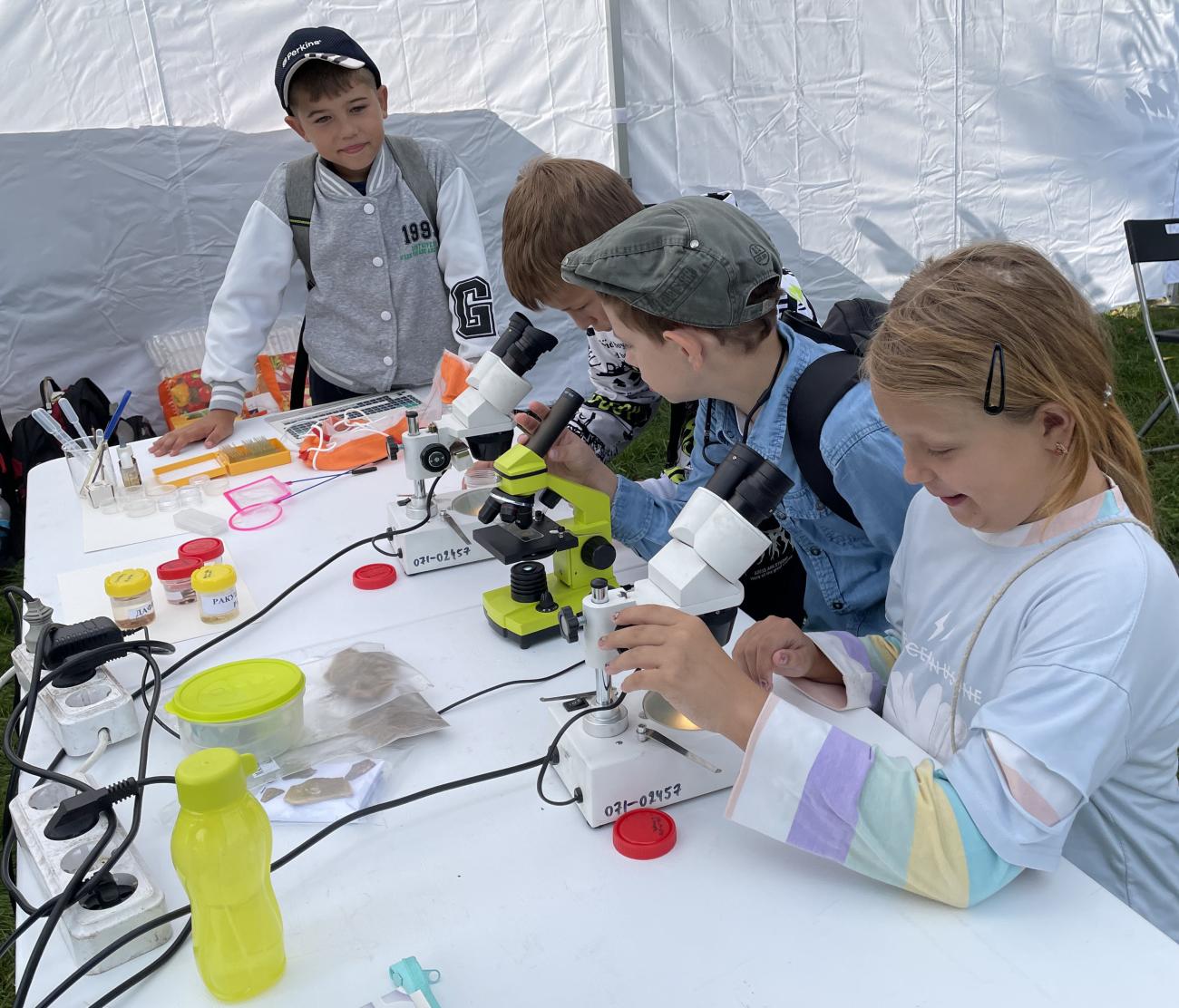
On September 2, 2023, a Science Festival was held in the Central Botanical Garden of the National Academy of Sciences of Belarus. From the IEE RAS, A.N. Neretina took part in the festival with a master class “In the shadow of dinosaurs and mammoths: a master class on working with microscopic fossils.” At the master class, the main results obtained by the team of the RSF project 22-14-00258 in 2023 were presented in popular science form.
Skeletons of dinosaurs and mammoths rightfully belong to the most popular exhibits in museum collections. They cause delight and admiration not only among children, but also among adults. A huge amount of scientific, popular science and even fantasy literature is dedicated to them, the kings of the Mesozoic and Cenozoic. We know a lot about their appearance and habits. Even the very fact of the mass extinction of dinosaurs and mammoths is well known not only to scientists, but also to the general public. However, how much do we know about the mechanisms of extinction of large animals that inhabited terrestrial and aquatic ecosystems in the past? And did similar processes occur in communities of microscopic organisms that are much less known, but no less important for the functioning of the biosphere?
Anna Neretina's master class was devoted to microscopic invertebrates - cladocerans, ostracods, conchostracans and some other groups of crustaceans, which, despite their good representation in the fossil record, have long remained an undervalued source of information about ancient aquatic ecosystems. At the master class, she talked about the methods that scientists use to collect the remains of microscopic invertebrates and their study, and also presented in a simple and fascinating form original data on the composition and structure of crustacean communities that inhabited the aquatic ecosystems of our planet in the Mesozoic and Cenozoic. She also explained the reasons for the transformation of these communities.

Fig.2.Festival guests watching the review material
Over 8 hours, about 12 thousand people took part in the master class - children, their parents and teachers from general and specialized schools. Guests and organizers of the festival highly appreciated the quality of the material presented. We hope that the master class will contribute to the involvement of gifted children in research activities!
